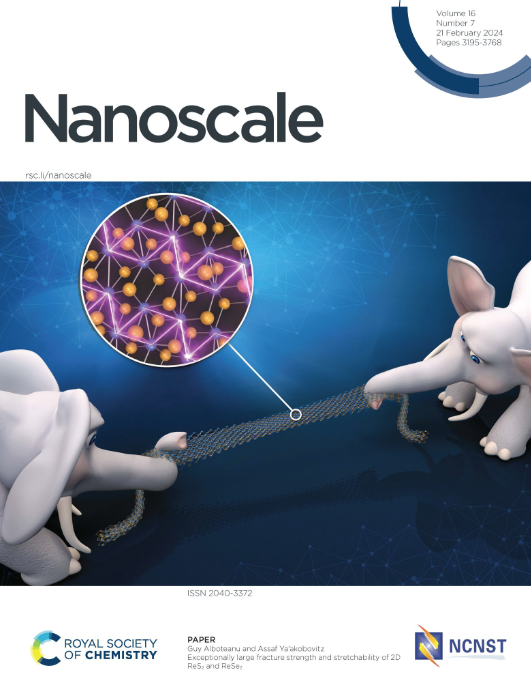双峰AFM交联过程中胶原弹性模量的延时纳米尺度图
IF 5.8
3区 材料科学
Q1 CHEMISTRY, MULTIDISCIPLINARY
引用次数: 0
摘要
胶原蛋白是哺乳动物中含量最多的结构蛋白。组织中的胶原蛋白暴露于交联过程,如糖基化,这可能导致进行性组织硬化。组织变硬可能被认为是衰老的标志。然而,胶原纳米纤维在不同交联过程和阶段的弹性模量的定量表征是不可用的。在两种交联过程中,分别与核糖和戊二醛的存在相关,应用双峰AFM生成I型胶原纳米带杨氏模量的延时图。不同孵育时间(0、30分钟、12小时、24小时和1周)获得弹性模量图。实验是在液体中进行的。杨氏模量在30分钟的孵育时间后开始急剧增加,从几MPa(天然)到100 MPa。从那时起,我们测量了一个单调的增长,直到一个星期后达到2gpa的饱和值。我们没有观察到依赖于弹性模量演变使用核糖与戊二醛。饱和值与干燥的胶原纳米带测量值非常相似。本文章由计算机程序翻译,如有差异,请以英文原文为准。

Time-lapsed nanoscale maps of the elastic modulus of collagen during cross-linking by bimodal AFM
Collagen is the most abundant structural protein in mammals. Collagen in tissues is exposed to cross-linking processes such as glycation which might cause progressive tissue stiffening. Tissue stiffening might be considered a landmark of aging. Yet a quantitative characterization of the elastic modulus of collagen nanofibers under different cross-linking processes and stages is not available. Bimodal AFM was applied to generate time-lapsed maps of Young's modulus of type I collagen nanoribbons under two cross-linking processes associated, respectively, with the presence of ribose and glutaraldehyde in the solution. Elastic modulus maps were acquired for different incubation times (0, 30 min, 12 h, 24 h and 1 week). The experiments were performed in liquid. The Young's modulus showed an initial sharp increase after an incubation time of 30 min, from a few MPa (native) to 100 MPa. From then onwards we measured a monotonic increase until a saturation value of about 2 GPa was reached after one week. We did not observe a dependence on the elastic modulus evolution using ribose versus glutaraldehyde. The saturation value was very similar to that measured on dry collagen nanoribbons.
求助全文
通过发布文献求助,成功后即可免费获取论文全文。
去求助
来源期刊

Nanoscale
CHEMISTRY, MULTIDISCIPLINARY-NANOSCIENCE & NANOTECHNOLOGY
CiteScore
12.10
自引率
3.00%
发文量
1628
审稿时长
1.6 months
期刊介绍:
Nanoscale is a high-impact international journal, publishing high-quality research across nanoscience and nanotechnology. Nanoscale publishes a full mix of research articles on experimental and theoretical work, including reviews, communications, and full papers.Highly interdisciplinary, this journal appeals to scientists, researchers and professionals interested in nanoscience and nanotechnology, quantum materials and quantum technology, including the areas of physics, chemistry, biology, medicine, materials, energy/environment, information technology, detection science, healthcare and drug discovery, and electronics.
 求助内容:
求助内容: 应助结果提醒方式:
应助结果提醒方式:


